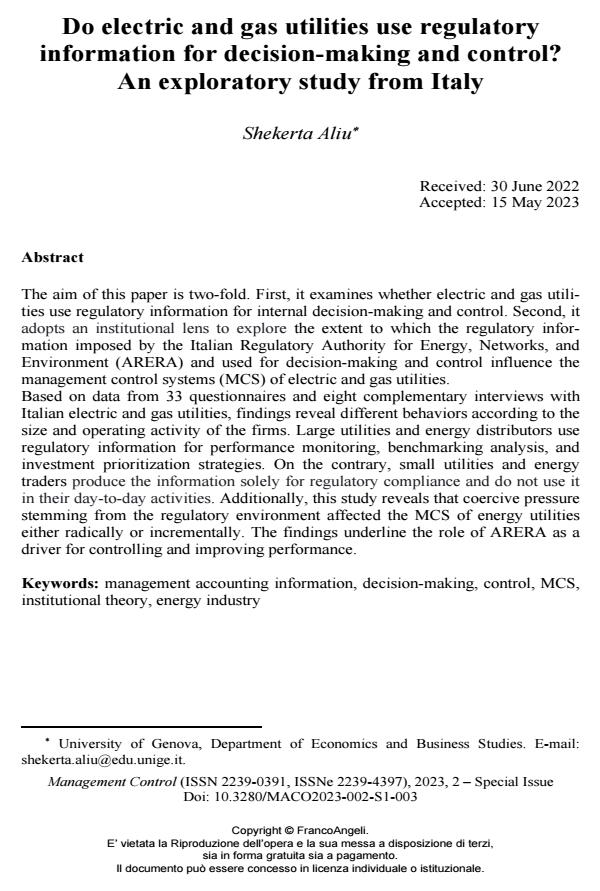Do electric and gas utilities use regulatory information for decision-making and control? An exploratory study from Italy
Titolo Rivista MANAGEMENT CONTROL
Autori/Curatori Shekerta Aliu
Anno di pubblicazione 2023 Fascicolo 2023/2 Suppl.
Lingua Inglese Numero pagine 28 P. 37-64 Dimensione file 269 KB
DOI 10.3280/MACO2023-002-S1003
Il DOI è il codice a barre della proprietà intellettuale: per saperne di più
clicca qui

FrancoAngeli è membro della Publishers International Linking Association, Inc (PILA)associazione indipendente e non profit per facilitare (attraverso i servizi tecnologici implementati da CrossRef.org) l’accesso degli studiosi ai contenuti digitali nelle pubblicazioni professionali e scientifiche
The aim of this paper is two-fold. First, it examines whether electric and gas utilities use regulatory information for internal decision-making and control. Second, it adopts an institutional lens to explore the extent to which the regulatory infor-mation imposed by the Italian Regulatory Authority for Energy, Networks, and Environment (ARERA) and used for decision-making and control influence the management control systems (MCS) of electric and gas utilities. Based on data from 33 questionnaires and eight complementary interviews with Italian electric and gas utilities, findings reveal different behaviors according to the size and operating activity of the firms. Large utilities and energy distributors use regulatory information for performance monitoring, benchmarking analysis, and investment prioritization strategies. On the contrary, small utilities and energy trad-ers produce the information solely for regulatory compliance and do not use it in their day-to-day activities. Additionally, this study reveals that coercive pressure stemming from the regulatory environment affected the MCS of energy utilities either radically or incrementally. The findings underline the role of ARERA as a driver for controlling and improving performance.
Parole chiave:management accounting information, decision-making, control, MCS, institutional theory, energy industry
Shekerta Aliu, Do electric and gas utilities use regulatory information for decision-making and control? An exploratory study from Italy in "MANAGEMENT CONTROL" 2 Suppl./2023, pp 37-64, DOI: 10.3280/MACO2023-002-S1003